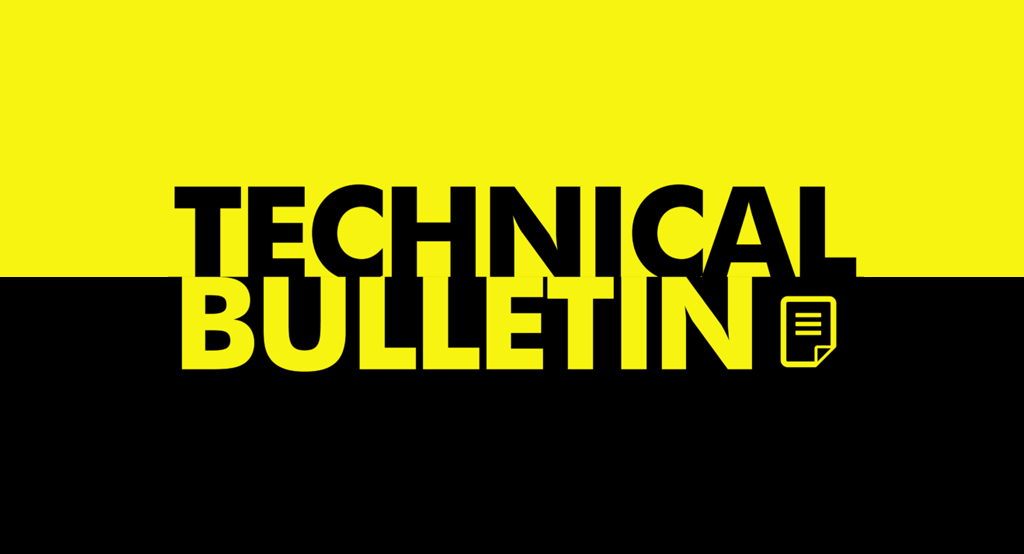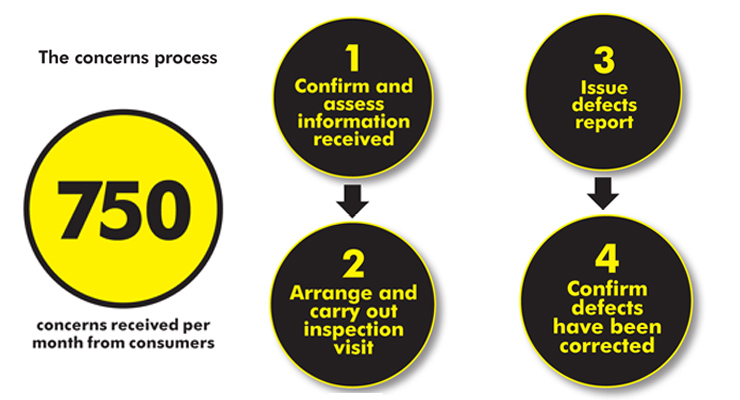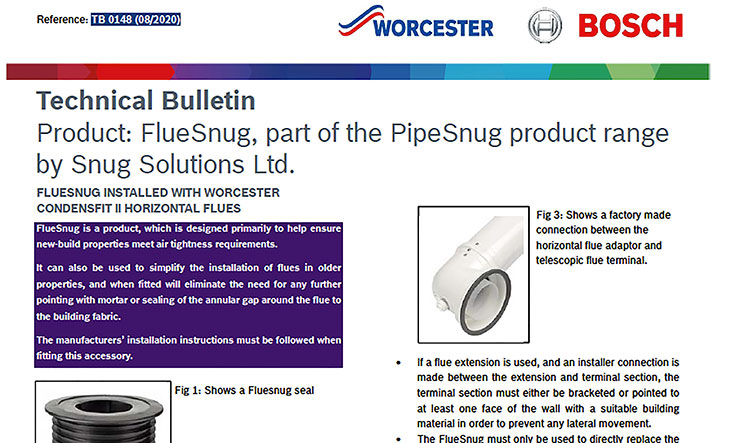
Technical Bulletin 002(B)
Reporting of Injuries, Diseases and Dangerous Occurrences Regulations (RIDDOR) as applied to Northern Ireland. Issued August 2018.
This Technical Bulletin issues guidance to Gas Safe registered businesses/engineers in Northern Ireland only. For reporting requirements in other geographical areas, see the appropriate version of Technical Bulletin 002.
There is a requirement under RIDDOR for certain types of injuries and dangerous gas fittings to be reported to HSENI. The purpose of this requirement is to enable HSENI to monitor and investigate incidents and share lessons learned in the interests of public safety. Gas Safe registered businesses are required (under RIDDOR) to carry out this reporting.
Note: This version of Technical Bulletin (TB) 002 replaces the version originally published on 5 August 2010, which is now withdrawn. This version has been reviewed and, where appropriate, revised to ensure that it remains both current and relevant.
Introduction
This Technical Bulletin (TB) covers the reporting criteria under The Reporting of Injuries, Diseases and Dangerous Occurrences Regulations (Northern Ireland) 1997 (RIDDOR)*, which applies specifically to Northern Ireland. More general information on RIDDOR reporting can be found in IGEM/G/11**), the current Gas Industry Unsafe Situations Procedure (GIUSP).
Note 1: IGEM/G/11 can be viewed by logging into your online account at: https://www.gassaferegister.co.uk/sign-in/
Note 2: For guidance on RIDDOR reporting in Great Britain see TB 002(A), for the Isle of Man see TB 002(C), and for Guernsey see TB 002(D).
The requirements of RIDDOR came into force in Northern Ireland on 1 April 1998. The Regulations place duties on employers and the self-employed to report incidents to the Health and Safety Executive Northern Ireland (HSENI).
Note 3: For details of current gas safety legislation, building legislation and industry standards for the geographical areas covered by Gas Safe Register, see the Legislative, Normative & Informative Document List (LNIDL)*** by logging into your online account at: https://www.gassaferegister.co.uk/sign-in/
RIDDOR requires that dangerous gas fittings must be reported to HSENI. The purpose of this requirement is to allow HSENI to monitor and investigate incidents and share lessons learned in the interests of public safety.
Attention: Gas Safe registered businesses are required (by RIDDOR) to carry out this reporting.
Guidance
RIDDOR Regulation 6(2) requires registered gas businesses to notify HSENI of gas installations which, by reason of ‘design, construction, manner of installation, modification or servicing’, are considered to be dangerous to such an extent that they pose an immediate risk of death, or major injury to gas users from significant gas escapes, inadequate/ incomplete combustion of gas, or inadequate removal of products of combustion.
Reports are only required where faulty workmanship is the cause. There is no requirement to report fittings that are dangerous due lack of maintenance and/or servicing alone. This requirement allows HSENI to identify dangers arising from bad design or workmanship.
The HSENI uses these reports to identify where and how serious risks arise, which incidents need to be investigated, and to provide all stakeholders with information and advice to help control the risks and prevent similar incidents happening in the future.
The general reporting criteria under RIDDOR that applies to Northern Ireland can be found in HSA 31 – A guide to the Reporting of Injuries, Diseases and Dangerous Occurrences Regulations (Northern Ireland) 1997 (see Note 3) and the current GIUSP.
What to report as a RIDDOR?
RIDDOR Regulation 6(2) requires Gas Safe registered businesses to notify installations that, as indicated above, are considered to be dangerous to such an extent that they pose an immediate risk of death, or major injury to gas users. For example, the immediate threat to gas users from gas escapes, inadequate combustion of gas, or inadequate removal of products of combustion.
In general, these will be Immediately Dangerous (ID) situations, as defined in the current GIUSP: examples that should be reported are listed below. However, this should not be regarded as an exhaustive list:
- a) Instances where the use of unsatisfactory fittings or poor workmanship result in a gas escape outside the tolerance of a tightness test
- b) Uncapped, open-ended pipes connected to the gas supply
- c) Appliances that are spilling products of combustion, or show signs of having done so, eg, staining around draught diverters on open-flued appliances or above gas fires, with no evidence that the cause has been rectified
- d) Defective flues or chimneys that are not clearing flue gases
- e) Appliances that should be flued, but are not
- f) Appliances that are not suitable for use with the gas supplied, eg, natural gas appliances being used with liquefied petroleum gas (LPG)
- g) Appliances that have had a safety device, such as a flame supervision device (FSD), made inoperative
- h) Appliances that are connected to the gas supply by a connection made of unsatisfactory material, such as garden hose
- i) Appliances that are dangerous through faulty servicing.
Matters of concern NOT reportable under RIDDOR
Some gas fittings may not have been installed in accordance with the requirements of gas safety legislation in force at the time the work was carried out. Unless they are found to be dangerous, they are not reportable to HSENI. Nevertheless, there are some types of ‘illegal’ installations that call into question the competence of the original installer. If Gas Safe registered engineers wish to report these installations to HSENI, they can do this by letter, email, or telephone to their local HSENI office as a complaint. These would include appliances in rented accommodation that have not been maintained safely.
Note 4: Organisations that report frequently to HSENI may wish to devise a simple proforma to use.
When to report?
A RIDDOR report must be made within 14 days of discovery of a dangerous gas fitting, using an NI2508G2 form, which can be downloaded free at: https://www.hseni.gov.uk/publications/report-dangerous-gas-fitting (see also How to report?).
How to report?
RIDDOR reports should be made directly to HSENI:
- • By telephone 02890 243249 (an NI2508G2 form must still be completed and sent to HSENI with 14 days).
- • By email: mail@hseni.gov.uk
- • By post to: The Health and Safety Executive for Northern Ireland, 83 Ladas Drive, Belfast BT6 9FR
Advice on completing a RIDDOR NI2508G2 form
The majority of the forms received by HSENI annually are completed correctly, but a survey undertaken by HSENI identified some areas for improvement. Only reportable incidents as defined above should be reported on Form NI2508G2.
The form should be completed as fully as possible. It is essential that it is made clear that the appliance/fitting has been made safe, whether by repair or disconnection; otherwise HSENI may telephone the reporting organisation/ business/individual to check.
As much detail as possible about the installation and about the person who carried out the work should be provided. However, HSENI recognises that this may not always be available.
The narrative box (Part E: Summary of dangerous gas fitting) at the end of the form helps to explain the background and gives useful detail about what has been found. Please avoid acronyms, abbreviations and industry terms where they will not be familiar to a lay-person. If a gas escape is involved, it is helpful to include any measurements made, eg, the pressure drop recorded.
How does HSENI process RIDDOR 6(2) reports?
On receipt of the RIDDOR, a member of the Inspectorate will decide whether further investigation should take place, so that enforcement action can be considered, such as a notice or prosecution.
After HSENI has made its decision about how to progress a report, information concerning registered/non-registered (illegal) installers may also be referred to Gas Safe Register.
Note 5: For general information about the process behind the development of Gas Safe Register Technical Bulletins and the expectations for all Stakeholders, see TB 1000**** by logging into your online account at: https://www.gassaferegister.co.uk/sign-in/
Download Technical Bulletin 002(B) here: Technical Bulletin 002(B).
Bibliography
* RIDDOR – Reporting of dangerous gas fittings – Reporting of Injuries, Diseases and Dangerous Occurrences Regulations (Northern Ireland)1997
** IGEM/G/11 – Gas Industry Unsafe Situations Procedure
*** LNIDL – Gas Safe Register Legislative, Normative & Informative Document List
**** TB 1000 – An introduction to Gas Safe Register Technical Bulletins


